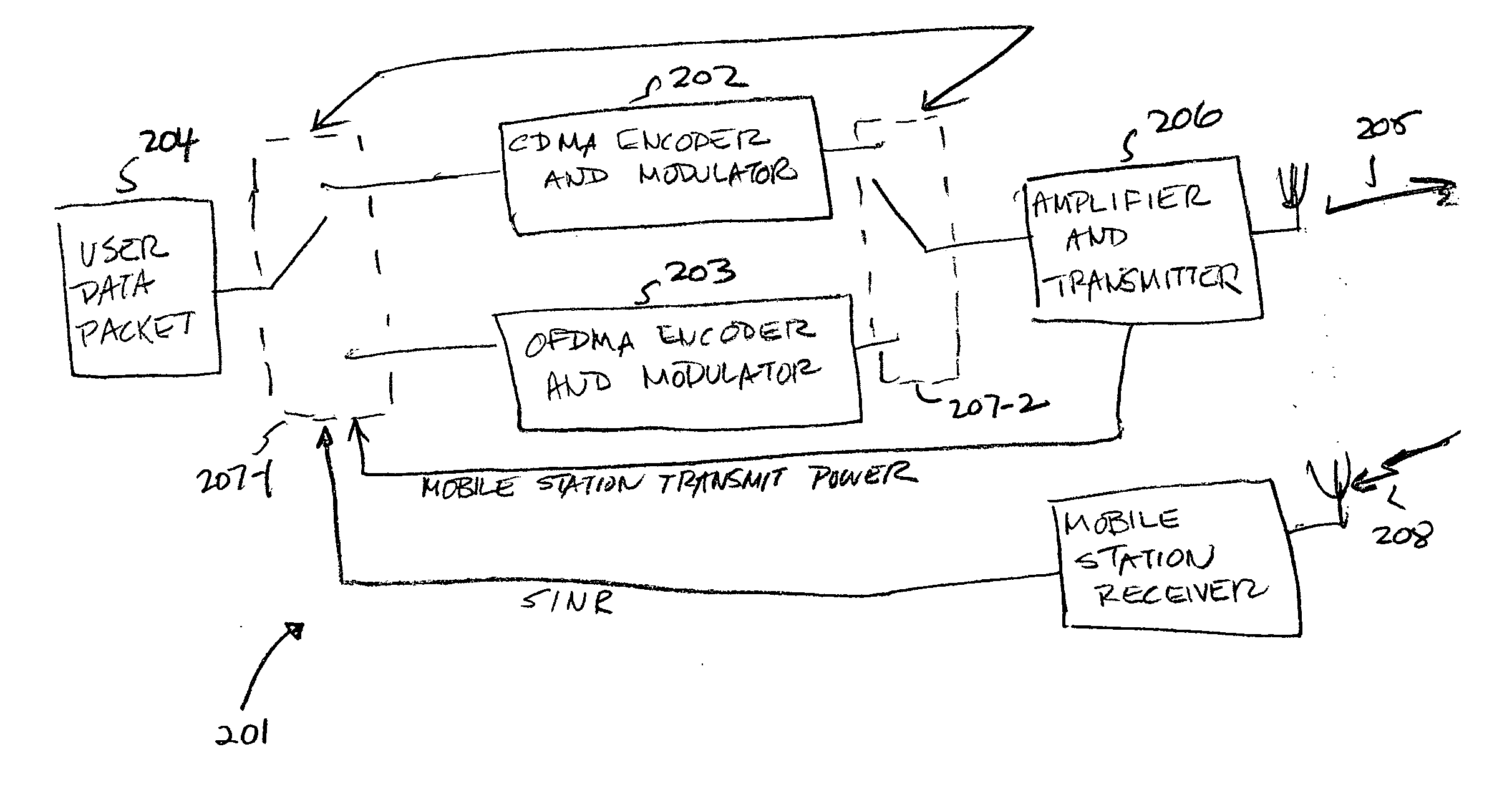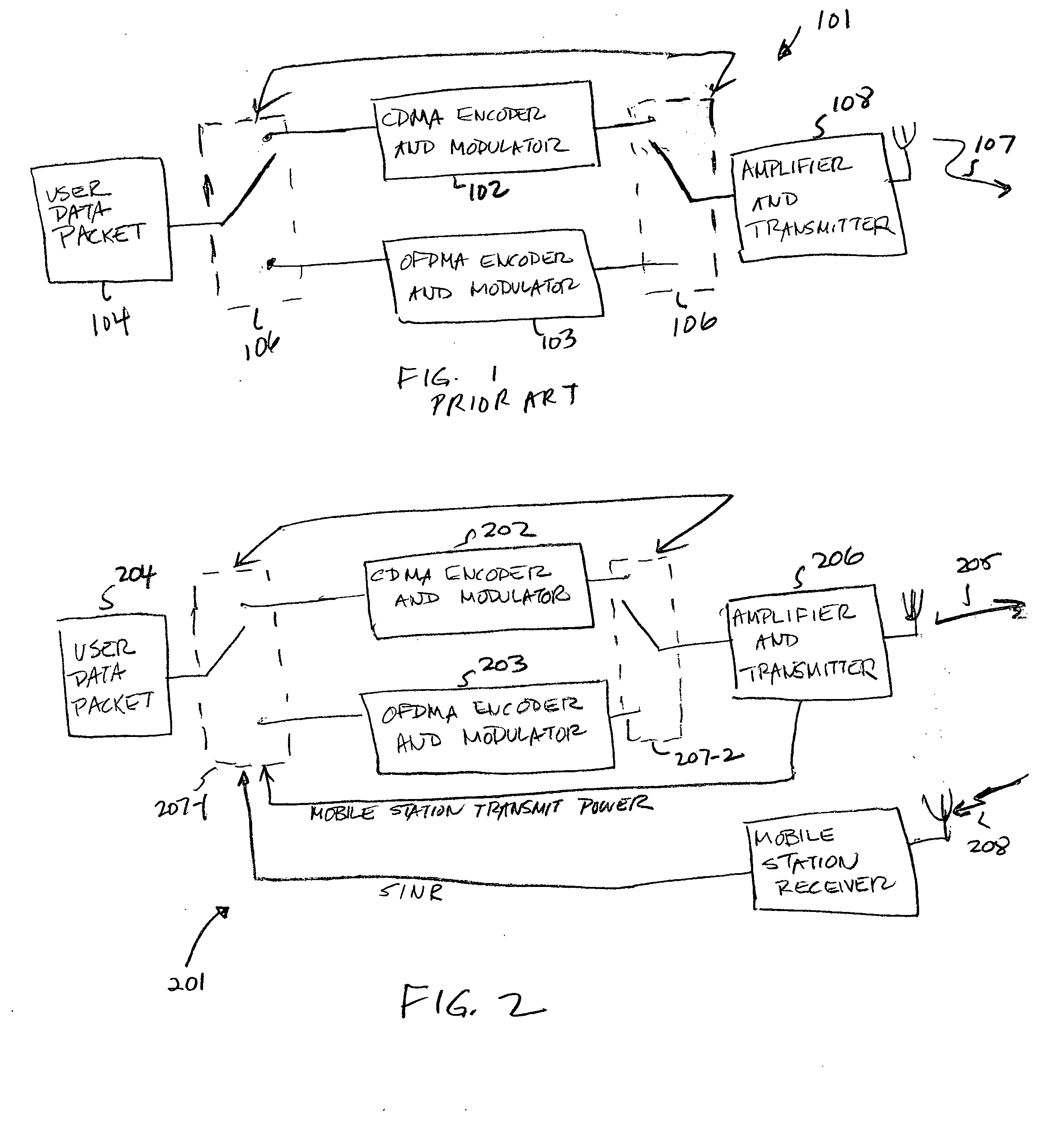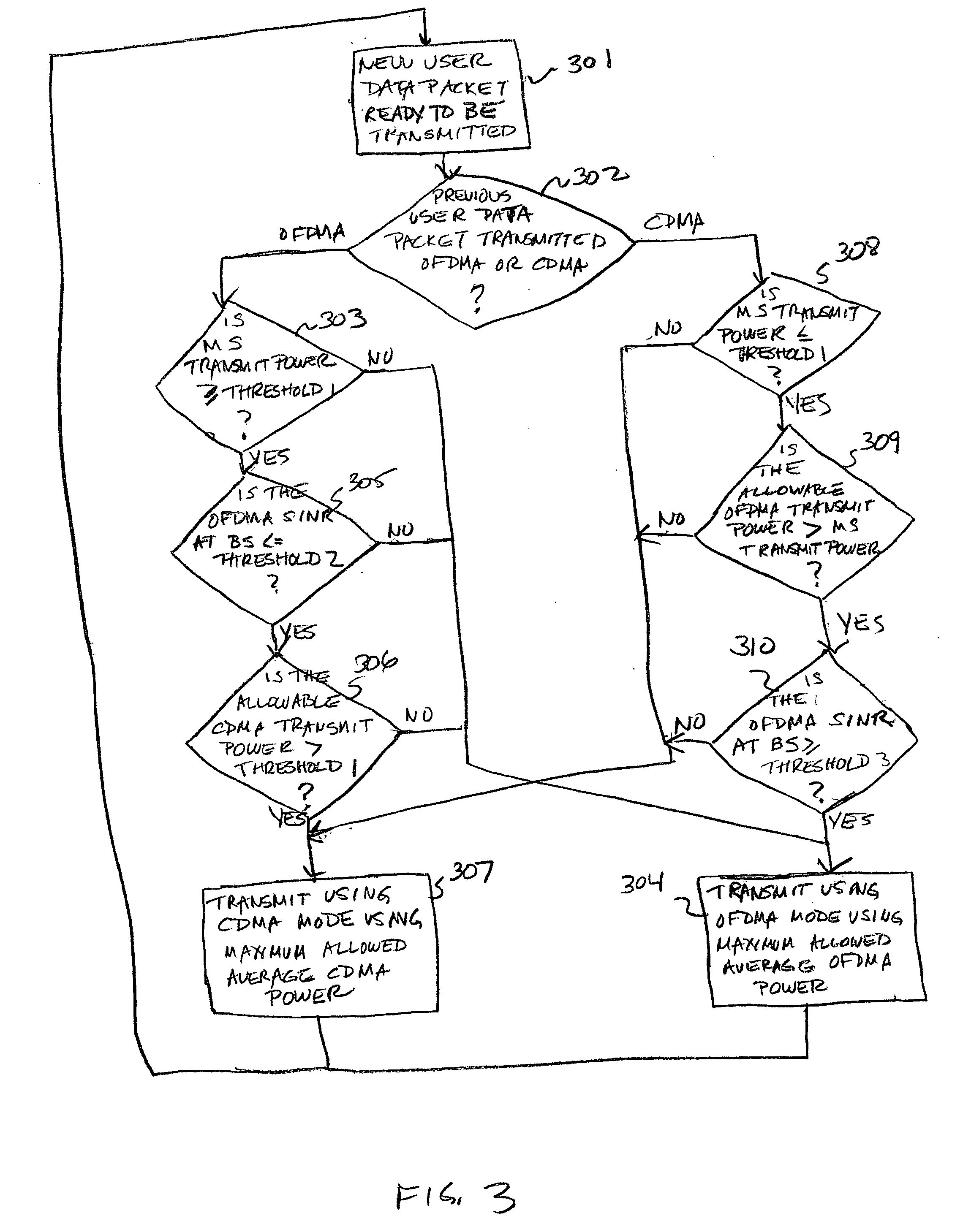Method of switching modes of uplink transmission in a wireless communication system
a wireless communication system and wireless communication technology, applied in the field of wireless communication, can solve the problems of inefficient use of reverse link resources, and the use of more powerful and therefore more expensive power amplifiers, and achieve the effect of improving data ra
- Summary
- Abstract
- Description
- Claims
- Application Information
AI Technical Summary
Benefits of technology
Problems solved by technology
Method used
Image
Examples
Embodiment Construction
[0016]With reference to FIG. 2, a mobile station 201 in a hybrid pre-coded CDMA-OFDMA system is shown. As in the conventional system of FIG. 1, mobile station 201 includes a pre-coded CDMA encoder and modulator 202 and an OFDMA encoder and modulator 203. A user data packet 204 and its subsequent retransmissions, if any, are encoded by either CDMA encoder and modulator 202 or OFDMA encoder and modulator 203. The resultant encoded and modulated packet is then transmitted on the uplink 205 to the base station (not shown) after being amplified and transmitted by amplifier and transmitter 206. Unlike the prior art system of FIG. 1 which switches between the CDMA mode and the OFDMA mode in accordance with the type of traffic represented by each new user data packet to be transmitted, in the embodiment of FIG. 2, the switch positions of commonly controlled switches 207-1 and 207-2 are determined by a combination of both the measured average transmit power of the mobile station, as fed back...
PUM
 Login to View More
Login to View More Abstract
Description
Claims
Application Information
 Login to View More
Login to View More - R&D
- Intellectual Property
- Life Sciences
- Materials
- Tech Scout
- Unparalleled Data Quality
- Higher Quality Content
- 60% Fewer Hallucinations
Browse by: Latest US Patents, China's latest patents, Technical Efficacy Thesaurus, Application Domain, Technology Topic, Popular Technical Reports.
© 2025 PatSnap. All rights reserved.Legal|Privacy policy|Modern Slavery Act Transparency Statement|Sitemap|About US| Contact US: help@patsnap.com



